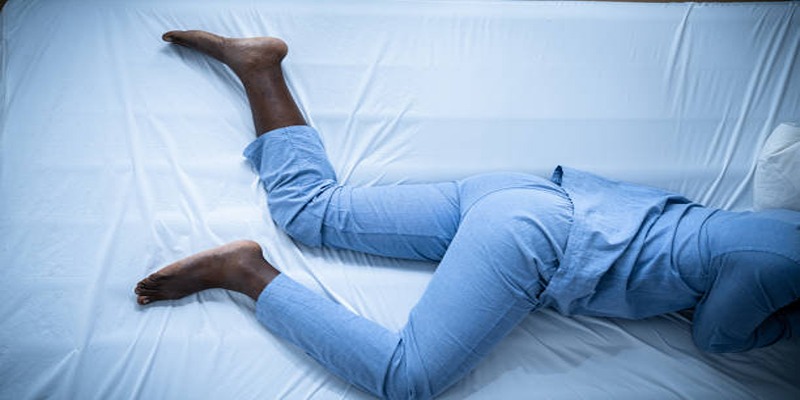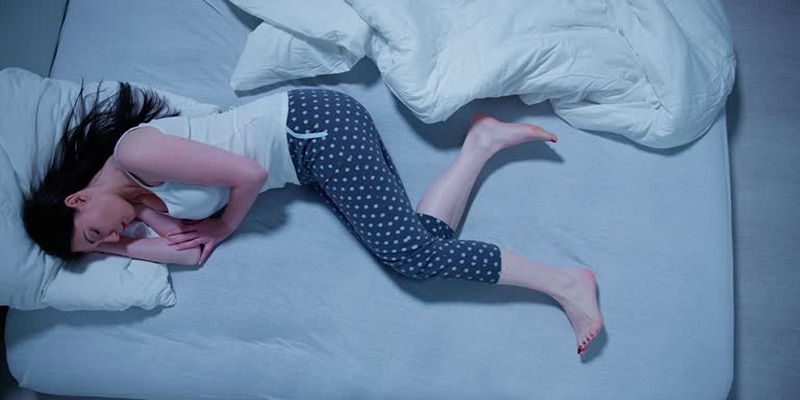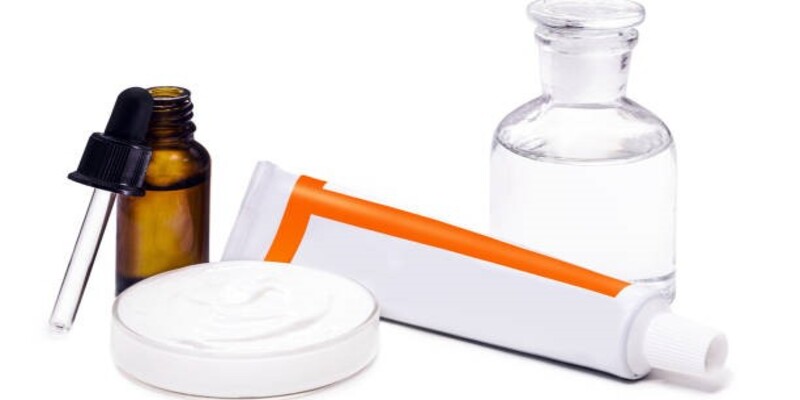Restless Legs Syndrome (RLS) is a neurological disorder characterized by an uncontrollable urge to move the legs, often accompanied by uncomfortable sensations. These symptoms typically worsen during the evening or nighttime, disrupting sleep and impacting daily activities. The precise cause of RLS remains unclear, but it is associated with genetic factors, iron deficiencies, and other underlying health conditions. It affects both men and women, though it is more prevalent among older adults. Fortunately, several effective treatments can help manage and alleviate the discomfort caused by RLS. These range from lifestyle modifications and dietary adjustments to medical interventions and alternative therapies. In this article, we will explore the top six solutions that have shown promise in treating Restless Legs Syndrome, offering hope and relief to those seeking respite from this condition.
Lifestyle and Dietary Modifications

One of the first steps in managing Restless Legs Syndrome is making simple lifestyle changes that may reduce symptoms. Regular exercise can be particularly beneficial, as it promotes healthy circulation and helps improve sleep quality. However, it's important to avoid intense physical activity close to bedtime, which might exacerbate symptoms. Additionally, maintaining a balanced diet that includes key nutrients such as iron, magnesium, and vitamin D is crucial, as deficiencies in these can contribute to RLS symptoms. Consuming foods rich in these essential minerals or taking supplements, under a healthcare provider's guidance, may help alleviate discomfort.
2. Medical Treatments
Medical treatments for Restless Legs Syndrome (RLS) are typically recommended when lifestyle and dietary changes fail to provide adequate relief. Prescription medications can effectively manage symptoms and enhance sleep quality for those suffering from moderate to severe RLS. Commonly prescribed dopaminergic agents, such as pramipexole and ropinirole, work by increasing dopamine levels in the brain to alleviate symptoms. Additionally, anticonvulsants like gabapentin and pregabalin have proven effective in reducing the sensory disturbances and discomfort associated with RLS.
In some cases, opioids may be considered for severe cases, though this is generally reserved for when other treatments have failed and under careful medical supervision due to potential dependence issues. It's crucial for individuals to work closely with their healthcare providers to determine the most appropriate treatment plan, as medication effectiveness and side effects can vary from person to person.
3. Iron Supplementation
Iron supplementation is a key component in addressing RLS, particularly for individuals with low iron levels or ferritin. Since iron deficiency is linked to the development of RLS, boosting iron intake through supplements or dietary adjustments may significantly reduce symptoms. Ferritin, a protein that stores iron in the body, should be assessed by a healthcare provider to determine if supplementing is necessary. Oral iron supplements are the most common form, but in certain cases, intravenous iron may be administered for more immediate results.
It's important to mention that iron supplements can have side effects such as constipation or stomach upset, so they should be taken under medical supervision to ensure safety and effectiveness. Regular monitoring of iron levels ensures the treatment remains effective and prevents potential iron overload.
4. Relaxation Techniques
Incorporating relaxation techniques into daily routines can significantly benefit individuals suffering from Restless Legs Syndrome. These methods aim to reduce stress and promote a sense of calm, which can help alleviate RLS symptoms. Practices such as yoga, meditation, and deep-breathing exercises have shown promise in easing tension and improving sleep quality. Progressive muscle relaxation, which involves tensing and relaxing different muscle groups, can also be particularly effective in helping individuals manage discomfort and promote restfulness.
Warm baths, massages, and the use of heating pads can further relax muscles and provide temporary relief from the persistent urge to move the legs. Engaging in these practices regularly can complement other treatments and contribute to a holistic approach to managing Restless Legs Syndrome.
5. Compression Devices and Therapy
Compression devices, such as pneumatic compression pumps or inflatable sleeves, may offer relief for some individuals experiencing RLS. These devices work by applying controlled pressure to the legs, which can improve circulation and help minimize sensations of discomfort. While compression devices might not be suitable for everyone, they can be a viable option for those seeking non-invasive solutions to manage their symptoms.
Additionally, cognitive behavioral therapy (CBT) can be beneficial for individuals who experience anxiety or sleep disturbances as a result of RLS. CBT helps change negative thought patterns and behaviors, promoting better sleep hygiene and reducing stress. Both compression devices and therapeutic interventions can be used alongside other treatments, providing a comprehensive approach to tackling the challenges posed by Restless Legs Syndrome.
Acupuncture and Alternative Therapies

Acupuncture, a traditional Chinese medicine practice, involves inserting fine needles into specific points on the body to promote balance and alleviate symptoms. Some individuals with Restless Legs Syndrome have reported finding relief through regular acupuncture sessions. While scientific evidence regarding its effectiveness remains limited, acupuncture may offer an alternative treatment path for those open to exploring complementary therapies.
Other alternative treatments include supplements such as folate, vitamin E, and valerian root, which are sometimes used to mitigate RLS symptoms. It's important for anyone considering such therapies to consult with a healthcare provider to ensure they are safe and suitable. Combining alternative therapies with conventional treatments can enhance overall well-being and provide a rounded strategy for managing Restless Legs Syndrome.
Conclusion
Managing Restless Legs Syndrome (RLS) often requires a multifaceted approach, combining lifestyle changes, medical treatments, and alternative therapies to provide effective relief. Understanding the importance of addressing dietary deficiencies, maintaining stress levels through relaxation techniques, and considering medical interventions where necessary can greatly improve the quality of life for those affected. Although RLS can be a persistent condition, each individual's path to managing it may differ, and it's essential to consult healthcare professionals to tailor a treatment plan that best suits their needs. By exploring various strategies and remaining open to both conventional and complementary therapies, individuals can experience improved comfort and better manage the challenges posed by this syndrome.







